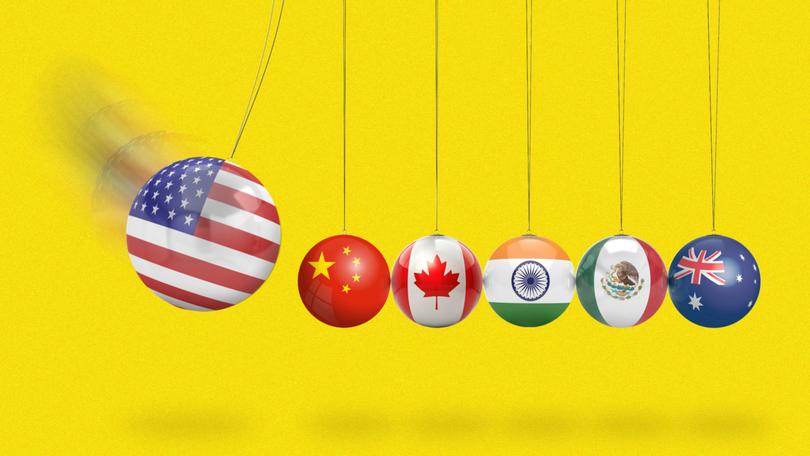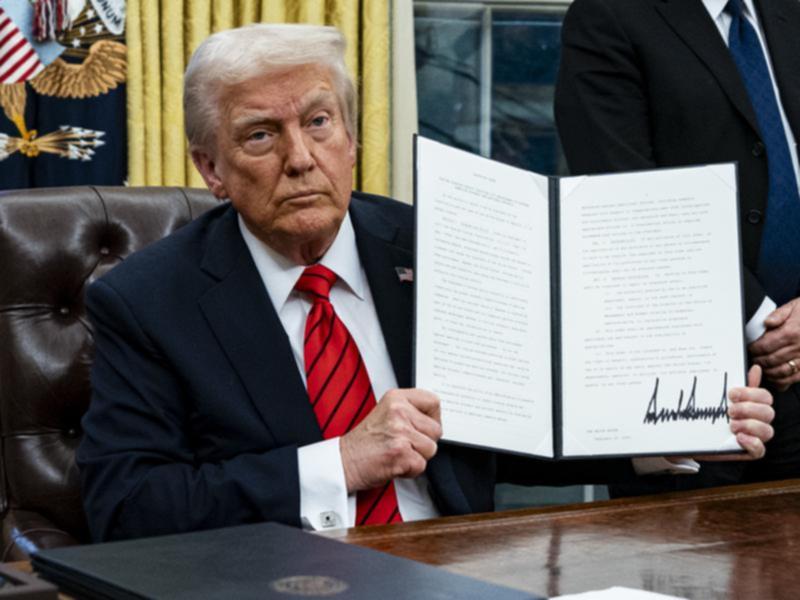Trump tariffs Round 2: US President puts squeeze on developed world with Fair and Reciprocal trade act

Donald Trump’s back trampling over free trade.
And he’s throwing out the rulebook.
In announcing the “Fair and Reciprocal” trade plan, the US is going much further than the standard trade dispute that has underpinned the last 80 years of the free trade order.
Sign up to The Nightly's newsletters.
Get the first look at the digital newspaper, curated daily stories and breaking headlines delivered to your inbox.
By continuing you agree to our Terms and Privacy Policy.“The Plan shall ensure comprehensive fairness and balance across the international trading system by factoring in losses as a result of measures that disadvantage the United States as applied, regardless of what they are called or whether they are written or unwritten,” the White House release said.
That plan goes beyond tariffs to now include non-tariff impediments like exchange rate manipulation, health and safety procedures, government procurement policies and lack of intellectual property protection.
Throwing in “valued added taxes” like Australia’s GST and Europe’s VAT is completely unprecedented, and will have governments and companies scrambling to work out where in the supply chain they will be violating these new rules.
Pru Gordon, executive director of the Australian Centre for International Trade & Investment, and a former senior adviser to federal trade ministers, said that the catchall of the announced policy is that the US has now declared that anything it deems unfair, is effectively fair game.
That means tearing up the 80 years of global trade rules about what is fair and unfair.
“Trump has essentially said anything that the US considers to be unfair that makes US exports less competitive, ‘we’re going to bundle it all up and put a tariff rate against what we think that’s worth’,” she said.
“We used to say the World Trade Organisation is about replacing the rule of the law of the jungle with rules. So what he’s done is he’s reintroduced the law of the jungle again,” Ms Gordon said.
Taxes have up until now been exempt from the WTO process, and in Trump’s eyes any tax relief given to exporters, would be considered an unfair advantage.
Australian exporters receive a GST exemption for exported goods that meet certain criteria, Dr Gordon said, and despite likely paying state consumption taxes, they don’t pay a US federal one.
“Their exporters don’t get that benefit. So he wants is to be able to penalise other countries for giving their exporters that leg up,” she said.
The rules won’t come into force until a review by various US government agencies such as the Department of Commerce and Treasury, and Dr Gordon said it was important for exporters to “take a breath” and wait for more concrete detail.
“Businesses in Australia will obviously want their government to ensure that the tariffs aren’t levied against their products. But until we know what the problem the US has with Australia and what it has with each each other country, and what sort of tariffs they’re talking about, there’s nothing the government really can do.”
Australia impact
Australia’s trade with the US is relatively small, so the impact on the overall economy is expected to relatively muted, according to ANZ economist Madeline Dunk.
The US received $16.7 billion worth of good from Australia in 2024, with $34.6bn coming our way from the States.
That is a fraction of the $220bn in exports sent to China in 2023, which is why the ripple effect of tariffs will be so important.
“For Australia, the impacts are very much going to be third party so it’s not so much the concern around direct tariffs on Australian goods. It’s about our relationship with China,” Ms Dunk said.
“So far the market reaction has been to worry about the inflationary impact of tariffs, but that downside global growth aspect may start to come into play.”
Trade wars
This new round of reciprocal tariffs seems to be aimed at cracking China’s economy, but in the process will set back the development of developing nations looking to trade their way out of poverty. The White House press release singles out Brazil’s ethanol industry and India’s motorcycle sector.
In poor countries particularly, building a home industry can be critical for national development. The US does it too, as Dr Gordon points out, particularly with agricultural subsidies.
“Their preferential treatment for agricultural products are an absolute leg -up for their industry that Australian agricultural sector has been fighting for for decades,” Dr Gordon said.
Trump tax cuts
It may be the concept of Making America Great Again is more about making the rich richer.
This new tariff proposal comes a day after House Republicans released a budget plan that would allow for an extension of the Tax Cuts and Jobs Act of the Trump’s first term, earmarking $US4.5 trillion ($7.1trn) in new spending on the tax cuts and adding another $US4 trillion to the US deficit.
The first term tax cuts overwhelmingly benefited the richest people in America, with the non-partisan Tax Policy Center finding the top 1 per cent of will receive an average tax cut of more than $US60,000 in 2025, compared to an average tax cut of less than $500 for households in the bottom 60 percent.
Brookings Insitution calculating that the top 0.1 per cent of earners were 1.4 per cent better off, the top 1 per cent 1 per cent better off, while the middle and lower income earners went backwards.
That was not just a function of lower income tax rates; a drop in the corporate tax rate meant companies issued more dividends and bought back shares, which also favoured the wealthy.
To offset the increase in spending, Republicans plan to cut spending by $US2tn over the next ten years but that won’t cover the $US4-$US7 trillion that will likely be added to the deficit and will need to be paid back somehow.

Trump seems to think that the best way to pay for that wealth redistribution is via tariffs.
They do work as a revenue raiser.
Since Trump started raising tariffs in the first term, the US government has collected $US264bn in higher customs from US importers, a third of that came during the Trump term, the remainder under Biden.
The workers, alas, are the ones who will be paying for the tariffs via higher prices. Not only will Trump’s MAGA flag-waving supporters see very little benefit from the taxman, they’ll be staring at holes in the social safety net if the economy doesn’t go their way. Research from the US-based Tax Foundation, for instance, estimated that the the first round of tariffs reduced employment by 142,000 full-time equivalent jobs.
Even if the onshoring hoped for by Trump’s new tariffs comes to fruition, the trillions paid out in tax cuts will start falling due soon. Which may be a reason why Trump continues to return to the tariff well.
In the long term, Trump said, tariffs are going to “make our country a fortune.

